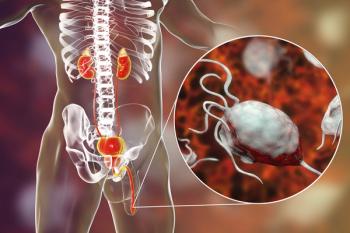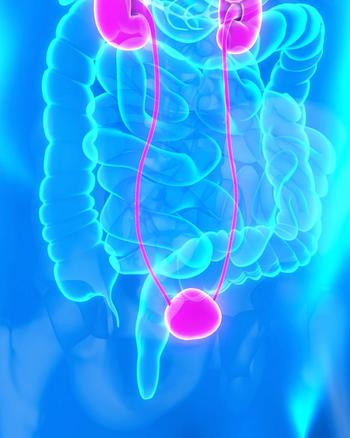
- ONCOLOGY Vol 13 No 6
- Volume 13
- Issue 6
Side Effects of Prostate Cancer Radiation Treatment Modalities Differ Markedly
The side effect profiles of various therapeutic modalities used in the definitive management of prostate cancer differ significantly, reported Tamara LaCouture, MD, and colleagues at the American Society for Therapeutic Radiology and
The side effect profiles of various therapeutic modalities used in the definitive management of prostate cancer differ significantly, reported Tamara LaCouture, MD, and colleagues at the American Society for Therapeutic Radiology and Oncology (ASTRO) meeting. Affiliated with Allegheny University of the Health Sciences, Philadelphia, Pennsylvania, Cooper Hospital/University Medical Center, Camden, New Jersey, and Albert Einstein Northern Division, Philadelphia, the investigators compared the prostate-specific antigen (PSA) response and treatment-related morbidity associated with prostate seed implantation vs external-beam radiotherapy for prostate cancer.
A total of 243 consecutive patients treated for cure were studied. Patients who underwent prostate seed implantation were divided into two groups: low-risk patients were defined as those with a pretreatment PSA value £ 15 ng/mL, a Gleason score £ 7, and a disease stage of T2A or lower; all other patients were defined as high risk. Low-risk patients were treated with seed implantation alone, whereas high-risk patients underwent seed implantation 2 to 4 weeks after external beam radiotherapy.
The patients who underwent brachytherapy alone received seed implantation in a total dose of either 120 Gy (palladium-103) or 170 Gy (iodine-125) to the prostate volume. For those who initially received combination therapy, the boost was delivered using seeds, with a brachytherapy dose of 75 Gy (palladium-103) or 125 Gy (iodine-125). For patients who received definitive external-beam radiotherapy, doses to the prostate ranged from 66.6 to 70.2 Gy.
Varying Side Effects
A different symptom profile was apparent among patients who received seeds compared with patients who received external-beam radiotherapy. The low-risk patients who underwent external-beam radiotherapy had a statistically significant increase in rectal symptoms compared with patients who underwent seed implantation alone (78% vs 11%; P £ .001). The high-risk patients who underwent external-beam radiotherapy alone also experienced more rectal symptoms than the patients who underwent combined-modality therapy (76% vs 26%; P £ .001).
In contrast, there appeared to be an increase in urinary irritative/obstructive symptoms of Radiation Therapy Oncology Group (RTOG) grades 3 and 4 in patients who underwent seed implantation vs those who did not. The mean duration of these irritative urinary symptoms was longer in patients who received brachytherapy than in those who received external-beam radiotherapy alone (4.5 vs 9.1 months; P £ .001).
Biochemical Control Data
With regard to PSA response, a significant difference was demonstrated at 18 months follow-up in the low-risk populations; this difference persisted after control for hormonal manipulation. At 36 months of follow-up, however, there appeared to be no significant difference, with mean PSA values being £ 1.2 ng/mL for both groups. The investigators postulated that the significant difference seen at 18 months of follow-up may represent the different kinetics of PSA decline in patients treated with seed implantation alone.
Similar data were noted for the high-risk patients, with a statistically significant increase in the 6-, 12-, and 18-month follow-up PSA values in patients who underwent external-beam radiotherapy. The investigators postulated that this may be secondary to a more rapid decline in PSA in the combined-modality group resulting from a higher incidence of hormonal manipulation. In view of the PSA kinetics following seed implantation, a minimum of 24 months of follow-up may be necessary to make any meaningful comparisons of biochemical control.
Articles in this issue
over 26 years ago
Mismatched Bone Marrow Transplants Effective in Acute Leukemiaover 26 years ago
Sex Hormone Levels May Help Predict Breast Cancer Riskover 26 years ago
Novel Cellular Agent Shows Promise in Treating AMLover 26 years ago
Some Medicare Managed Care Plans Restrict Mammogramsover 26 years ago
ASCO Urges Congress to Increase NIH Funding by at Least 15%over 26 years ago
Institute of Medicine Report Criticizes Quality of Cancer CareNewsletter
Stay up to date on recent advances in the multidisciplinary approach to cancer.


















































































